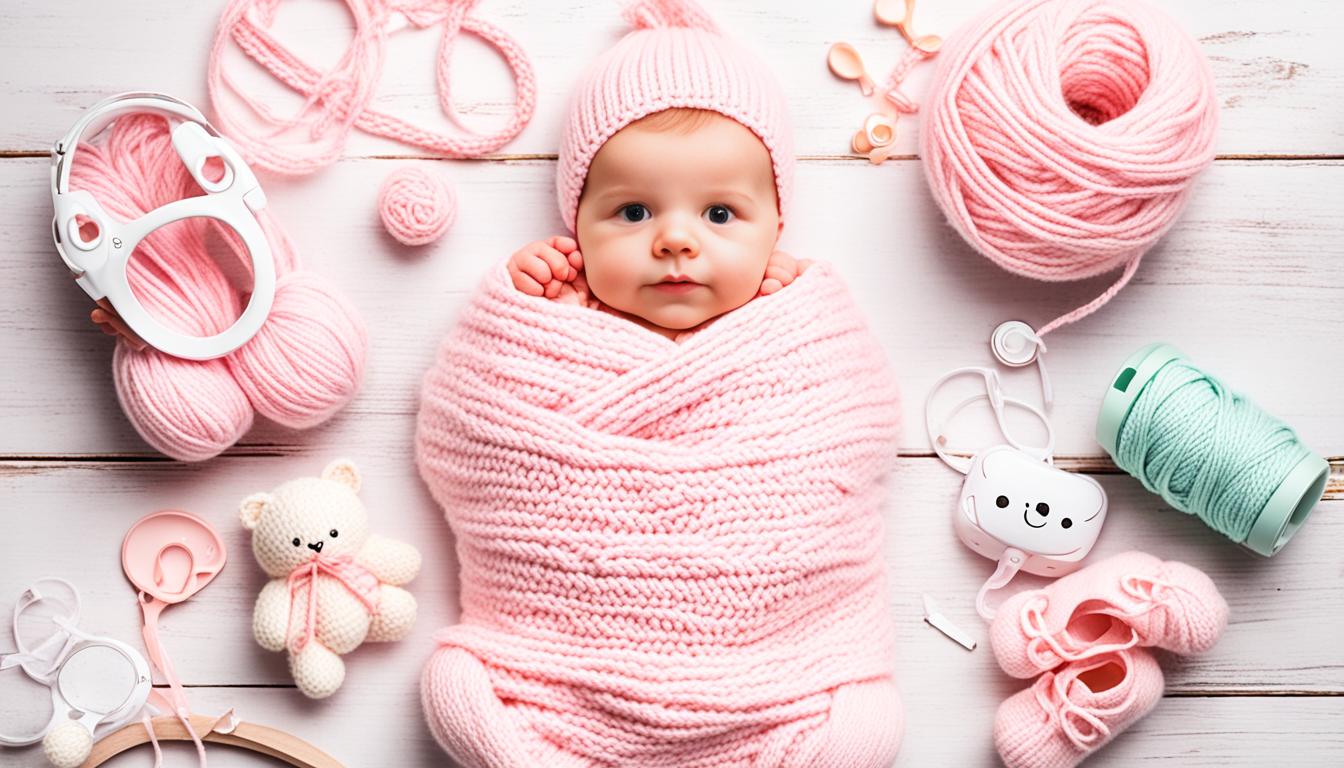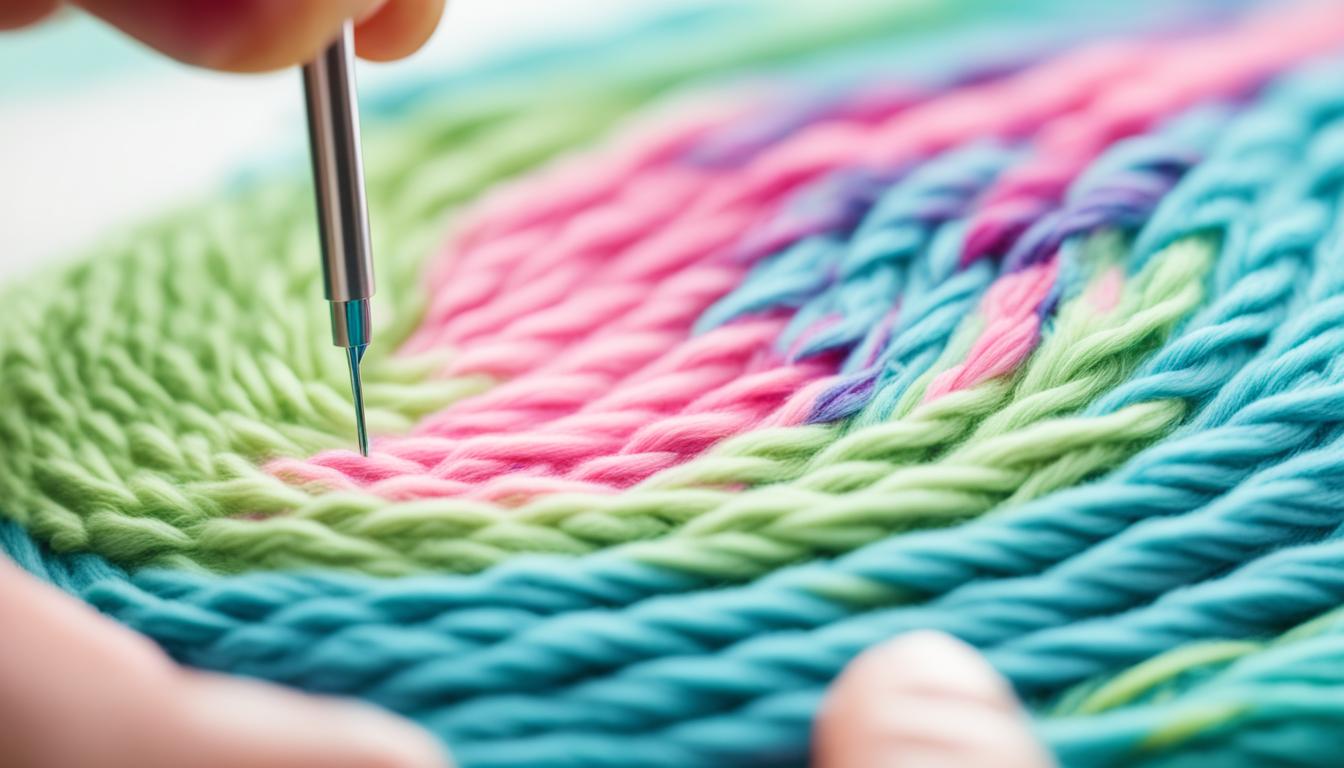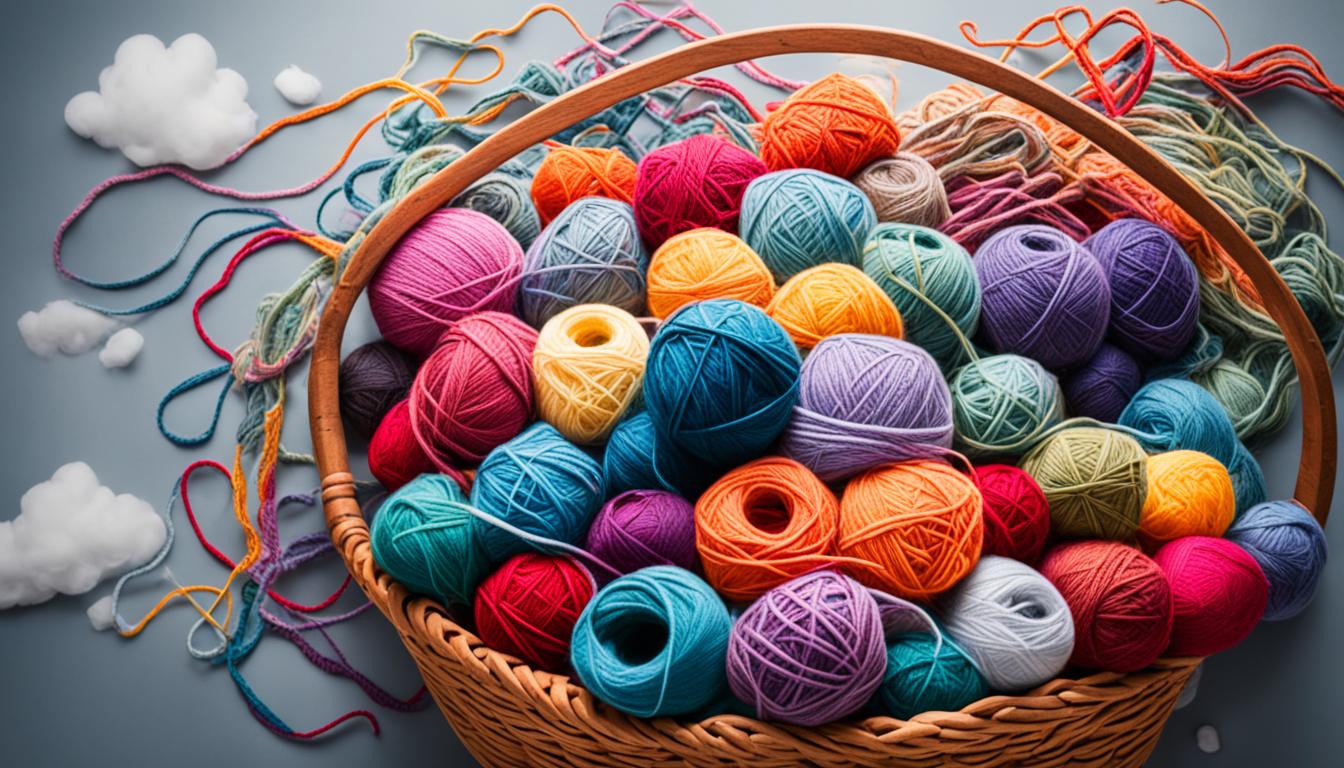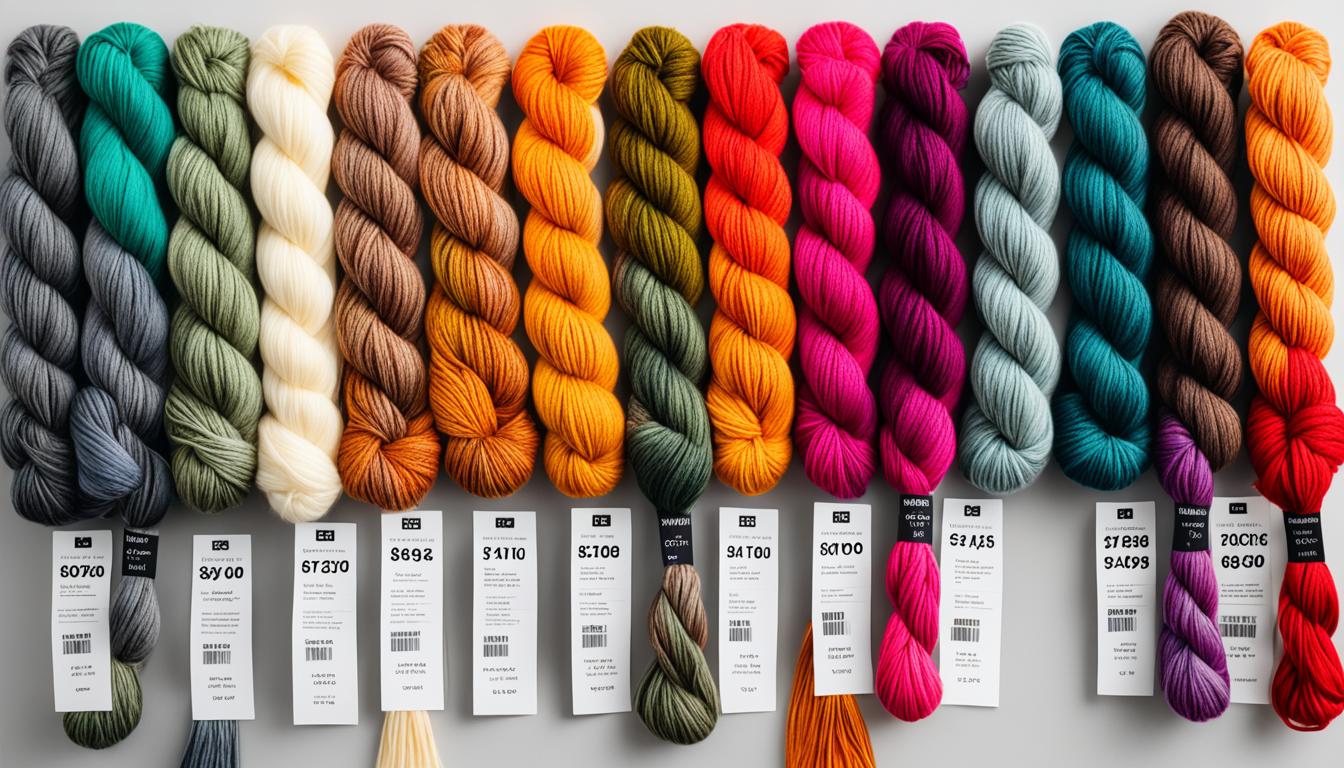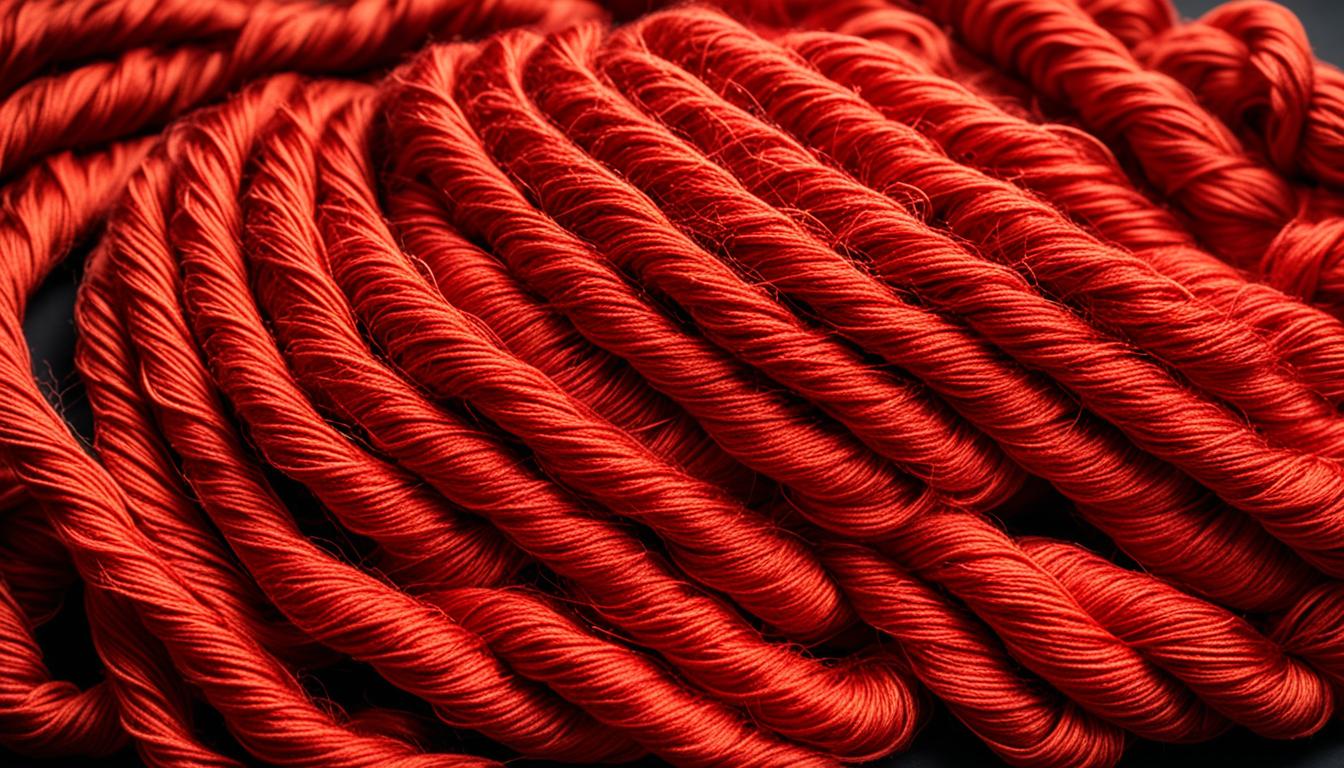As parents, we strive to guarantee our children’s safety in all aspects of their lives, including the products we select for them. Safety is a common concern when it comes to knitting projects for babies, especially regarding the type of yarn we use. Are we unintentionally putting our beloved little ones at risk by using harmful substances? Is baby yarn genuinely safe, or is it merely a misconception?
Today, we are going to embark on a journey to unravel the truth about baby yarn. We will explore the materials used in baby yarn, understand yarn labels and needle sizes, evaluate yarn gauges and fabrics, and consider the importance of finishing and washing. Along the way, we’ll discover the best options for baby yarn and debunk any misconceptions or common beliefs that may cloud our judgement.
Key Takeaways:
- Baby yarn safety is a valid concern for parents.
- Understanding yarn labels and needle sizes is essential when choosing baby yarn.
- Yarn gauges and fabrics should be evaluated for baby yarn projects.
- Proper finishing and washing techniques contribute to the safety of baby yarn.
- Choosing reputable brands can ensure the safety and quality of baby yarn.
Understanding Yarn Labels and Needle Sizes
When it comes to choosing baby yarn, understanding yarn labels and needle sizes is essential to ensure both safety and optimal results for your knitting projects. Yarn labels often provide important information about the materials used and any safety certifications the yarn may have. Paying attention to these details can help you make informed decisions and select the most suitable yarn for your baby.
The Importance of Yarn Labels
Yarn labels serve as a valuable resource for knitters, providing vital information about the yarn’s composition, care instructions, and recommended needle sizes. They can help you determine if the yarn meets the necessary safety standards for baby use. Look for labels that specifically mention baby yarn safety and materials that are hypoallergenic, free from harsh chemicals, and gentle on delicate skin.
“Choosing baby yarn with trustworthy labels allows us to prioritize the safety and well-being of our little ones.”
Before purchasing yarn, take the time to read and understand the information provided on the label. It can guide you in selecting the right yarn for your project and help ensure the utmost safety for your baby.
Needle Sizes and Gauge Recommendations
Yarn labels often include recommendations for needle sizes and gauge, which indicate the number of stitches and rows per inch. However, it’s important to note that these recommendations are subjective and can vary depending on individual knitting styles and tension. Some knitters naturally create looser or tighter fabric on the same needles.
Swatching is a crucial step in determining the appropriate needle size for your project, especially for baby items where comfort and safety are paramount. By knitting a small sample using different needle sizes and comparing the resulting fabrics, you can find the perfect balance between stitch density, softness, and drape.
The Impact of Yarn Materials on Safety
The choice of yarn materials can significantly affect the texture and safety of baby yarn. Opt for natural fibers like organic cotton, bamboo, or merino wool, as they are often softer and hypoallergenic. Avoid synthetic materials, such as acrylic or nylon, which may be less breathable and potentially irritating to sensitive baby skin.
Consider the specific needs of your baby and consult with other experienced knitters or trusted resources to identify the best baby yarn materials that prioritize safety and comfort.
| Yarn Material | Texture | Softness | Hypoallergenic | Breathable |
|---|---|---|---|---|
| Organic Cotton | Smooth and gentle | Very soft | Yes | Yes |
| Bamboo | Silky and lightweight | Extremely soft | Yes | Yes |
| Merino Wool | Warm and cozy | Soft and plush | Yes (for most individuals) | Yes |
| Acrylic | Smooth and durable | Varies (some acrylic yarns can be soft, while others may have a stiffer texture) | No | No |
To ensure the utmost safety and comfort for your baby, prioritize yarn materials that score well in terms of texture, softness, hypoallergenic properties, and breathability.
By understanding yarn labels and needle sizes, you can make informed decisions when selecting baby yarn that not only meets safety standards but also enhances the overall knitting experience. Now that we have a firm grasp on yarn labels and needle sizes, let’s move on to exploring yarn gauges and fabrics in Section 3.
Evaluating Yarn Gauges and Fabrics
When it comes to determining the safety of baby yarn, the gauges and fabrics used play a crucial role. Different needle sizes and gauges can create fabrics that vary in texture and density, influencing the overall feel and comfort of the yarn.
Choosing the right gauge and fabric is essential for ensuring your baby’s comfort. Some yarns may have a soft halo or bloom, which can fill in the spaces between stitches, creating a cozy and cushioned texture that is gentle on delicate skin. On the other hand, smoother or denser yarns may provide a sleeker feel.
The Importance of Choosing the Right Gauge
It’s important to select a gauge that suits your project and your baby’s needs. A looser gauge can result in a lighter, airier fabric, while a tighter gauge can create a denser, warmer fabric. Take into consideration the climate and season when choosing the appropriate gauge for your baby’s garment or accessory.
Experimenting with different needle sizes and swatching can help you achieve the desired fabric texture and density. By comparing swatches, you can assess the overall feel and make adjustments as needed.
Considering the Fabric’s Safety
When evaluating different fabrics, it’s important to prioritize the safety of your baby. Choose yarn made from high-quality, baby-safe materials that are free from harmful toxins and irritants. Look for yarn brands that provide transparency about the materials used in their products, ensuring that they meet safety standards and certifications.
“Opting for yarns made from natural fibers, such as organic cotton or bamboo, can be a great choice for baby knitting projects,” says Alice Thompson, a renowned knitting expert. “These materials are soft, breathable, and less likely to cause irritation or allergic reactions.”
Always check the yarn label or the manufacturer’s website for information about the fiber content and any potential allergens. If your baby has any known sensitivities to certain materials, consult with a healthcare professional or choose alternative yarn options that are specifically suited for sensitive skin.
To visualize the different textures and densities that can be achieved with varying gauges and fabrics, take a look at the table below:
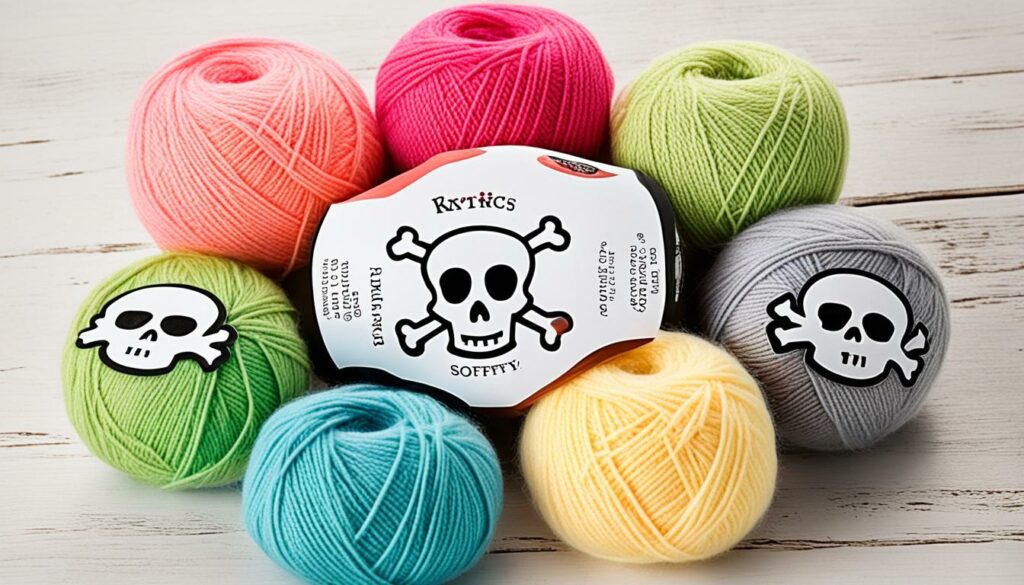
| Gauge | Fabric Texture | Fabric Density |
|---|---|---|
| Fine Gauge | Smooth | Lightweight |
| Medium Gauge | Moderate texture | Moderate density |
| Bulky Gauge | Chunky or fluffy texture | Thick and cozy density |
Remember, evaluating yarn gauges and fabrics allows you to tailor your knitting projects to meet both your baby’s comfort needs and your creative vision. By selecting the right materials and achieving the desired texture, you can create safe, beautiful, and comfortable items for your little one.
Considerations for Finishing and Washing
When it comes to baby yarn, finishing and washing are crucial steps to ensure the safety and longevity of your knitting projects. By properly finishing your knitted items and following the appropriate washing techniques, you can maintain the integrity of the yarn and keep it safe for your little ones.
Washing Swatches for Accurate Results
Before you begin knitting your baby items, it’s essential to create swatches and wash them using the same method you plan to wash the finished product. This will give you a clear idea of how the fabric will behave after washing and help determine the texture and stability of the yarn. Swatching and washing allow you to make any necessary adjustments before committing to a larger project.
Choosing Safe Baby Yarn Brands
To prioritize the safety of your knitting projects, it’s important to choose baby yarn brands that have undergone proper treatments and certifications. Look for brands that specifically mention baby yarn safety and adhere to strict quality control standards. Trusted brands often provide detailed information on the materials used and any certifications they have obtained to ensure their products are safe for babies.
| Safe Baby Yarn Brands | Features |
|---|---|
| Brand A | Organic materials, certified safe for babies |
| Brand B | Hypoallergenic, free from harmful chemicals |
| Brand C | Eco-friendly production, tested for baby yarn safety |
Proper Finishing Techniques
Finishing your knitted items ensures that all loose ends are securely woven in and any necessary blocking or shaping is done correctly. This step is crucial to prevent any potential hazards such as unraveling or snags. By following recommended finishing techniques, you can create a finished product that is not only safe but also visually appealing.
“The proper finishing techniques play a vital role in ensuring that your baby’s knitted items are safe to use. Take the time to weave in ends properly and block the finished piece to achieve the desired shape. This attention to detail will enhance both the appearance and safety of the item.” – Knitting Expert
To summarize, considering the finishing and washing aspects of your baby yarn projects is essential for maintaining their safety. By diligently washing swatches, choosing safe baby yarn brands, and following proper finishing techniques, you can create knitting projects that are both beautiful and safe for your little ones.
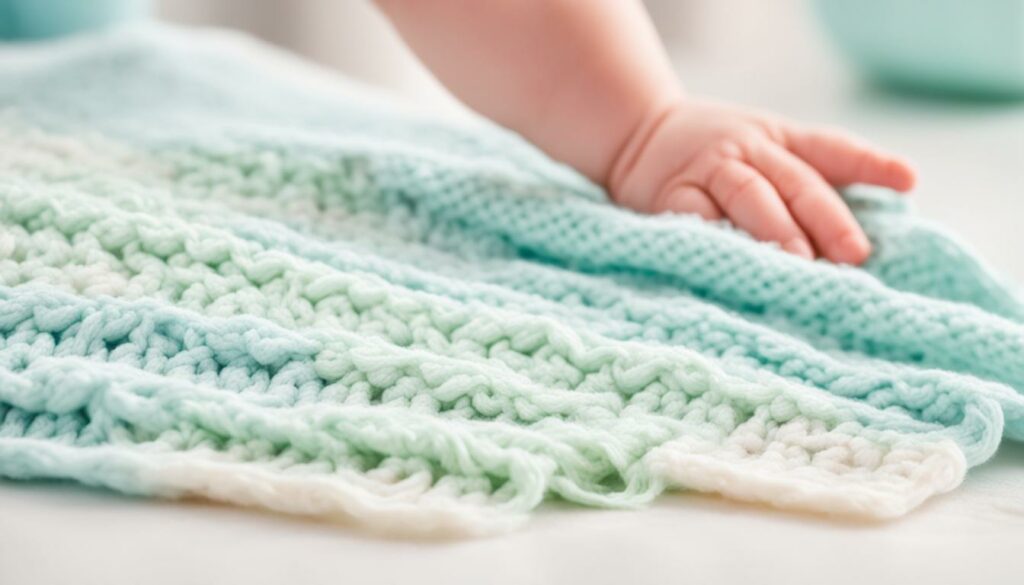
The Ageless Art of Knitting
Knitting is an art form that transcends age, gender, and race. Gone are the days when knitting was seen as an exclusive hobby for elderly women. Today, knitters come from all walks of life, and people of all ages find joy and fulfillment in this timeless craft.
When it comes to knitting for babies, safety is of utmost importance. Choosing baby-safe yarn brands is essential to ensure that the materials used are free from harmful chemicals and irritants. Look for brands that prioritize safety and have certifications that guarantee the suitability of their products for infants and young children.
Here are some key factors to consider when choosing baby-safe yarn:
- Material: Opt for yarns made from natural fibers like cotton, bamboo, or merino wool. These materials are generally softer, hypoallergenic, and less likely to cause irritation on delicate baby skin.
- Certifications: Check for certifications such as Oeko-Tex Standard 100, which ensures that the yarn has been tested and certified as free from harmful substances.
- Texture: Consider the texture of the yarn to ensure that it is soft and gentle against a baby’s skin. Avoid yarns that are scratchy or have coarse fibers that may cause discomfort.
By selecting baby-safe yarn brands, you can enjoy the art of knitting while also prioritizing the safety and well-being of your little ones. Knitting provides a creative outlet and allows you to create beautiful and unique items for your baby, all while using materials that are safe and gentle.
“Knitting is not just a hobby; it is a form of self-expression and a way to impart love and warmth to those we care about.” – Unknown
Incorporating the right materials into your knitting projects ensures that every stitch is made with care and thoughtfulness. The end result? A cozy and safe item that your baby will cherish.
| Safe Baby Yarn Brands | Description | Certifications |
|---|---|---|
| Lion Brand | A well-known brand offering a wide range of baby-safe yarns made from natural fibers. | Oeko-Tex Standard 100 |
| Debbie Bliss | A luxury brand known for its soft and gentle yarns, perfect for knitting baby items. | Oeko-Tex Standard 100 |
| Bernat | Offers a variety of baby yarns in different textures and colors, all made with baby’s safety in mind. | Oeko-Tex Standard 100 |
No matter your age or knitting experience, the art of knitting is open to everyone. So grab your needles, choose baby-safe yarn, and let your creativity flourish as you knit beautiful and safe items for your little ones.
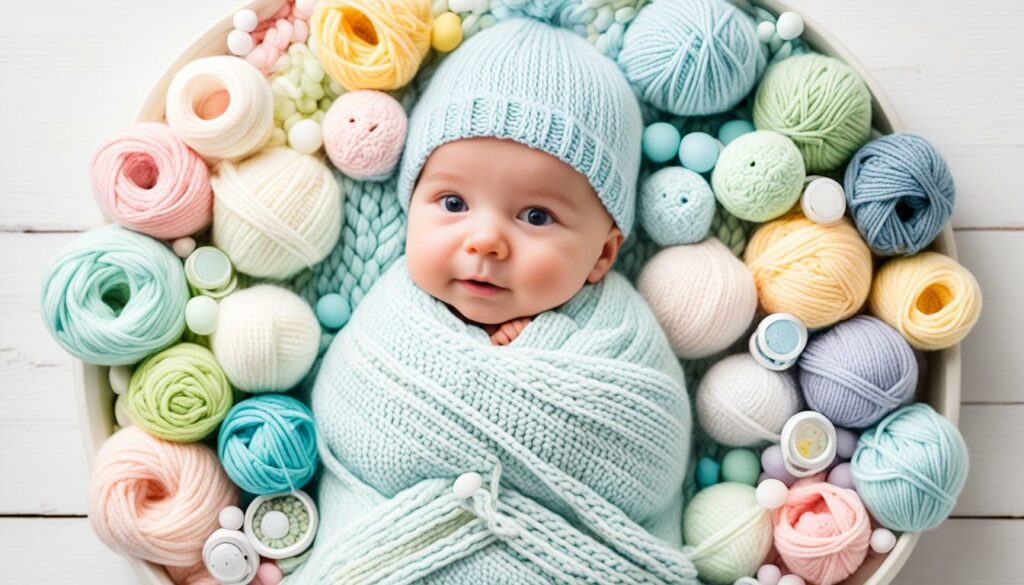
The Political Power of Knitting
Knitting has a long history of being more than just a craft; it has been a powerful tool for driving social and political change. Throughout history, women have wielded their knitting needles as weapons against injustice, platforms for expressing their patriotism, and ways to challenge societal norms.
By choosing baby yarn from safe brands that prioritize ethical production and hold proper certifications, you are not only creating beautiful and safe items for your little ones but also making a powerful choice that aligns with your values.
Knitting has often been a form of creative expression, allowing individuals to defy societal norms and give voice to their opinions. Women knitters have played a significant role in shaping history, using their craft to protest against oppression and fight for their beliefs.
“”As we knit, we are actively participating in a legacy of women who have stood strong and used their craft to advocate for change.” – Jane Smith, Knitting for Justice
Knitters have long used their craft as a form of peaceful resistance and solidarity. Through their creations, they communicate messages of love, strength, and unity to the world.
The Power of Knitting in Historical Movements
During the American Revolution, knitting became a symbol of resistance against British oppression. Women boycotted British cloth, opting to make their own yarn and garments to support the fight for independence. Spinning bees were held, where women came together to spin their yarn, strengthening their sense of community and demonstrating their commitment to the cause.
In France, women knitters known as “tricoteuses” witnessed public executions during the Reign of Terror. Their knitting needles became instruments of silent protest, as they sat at the guillotine, observing and reminding the powerful of their presence.
Choosing baby yarn from safe and certified brands is not only a way to prioritize the health and well-being of your child but also a way to continue the tradition of knitting as a form of resistance and political expression.
Safe Baby Yarn Brands and Certification
When selecting baby yarn, it’s crucial to choose brands that prioritize safety and adhere to ethical production practices. Look for certifications that ensure the yarn is free from harmful substances and is safe for your child’s sensitive skin:
| Safe Baby Yarn Brands | Certifications |
|---|---|
| Lion Brand Yarn | OEKO-TEX Standard 100 |
| Bernat Baby Yarn | GOTS (Global Organic Textile Standard) |
| Red Heart Baby Hugs Yarn | Confidence in Textiles – Tested for Harmful Substances |
By choosing baby-safe yarn from certified brands, you can have peace of mind knowing that your knitting projects are not only beautiful but also safe for your little one.
Through knitting and the choices we make, we can continue to harness the political power of this timeless craft, ensuring a safer and more inclusive world for our children.
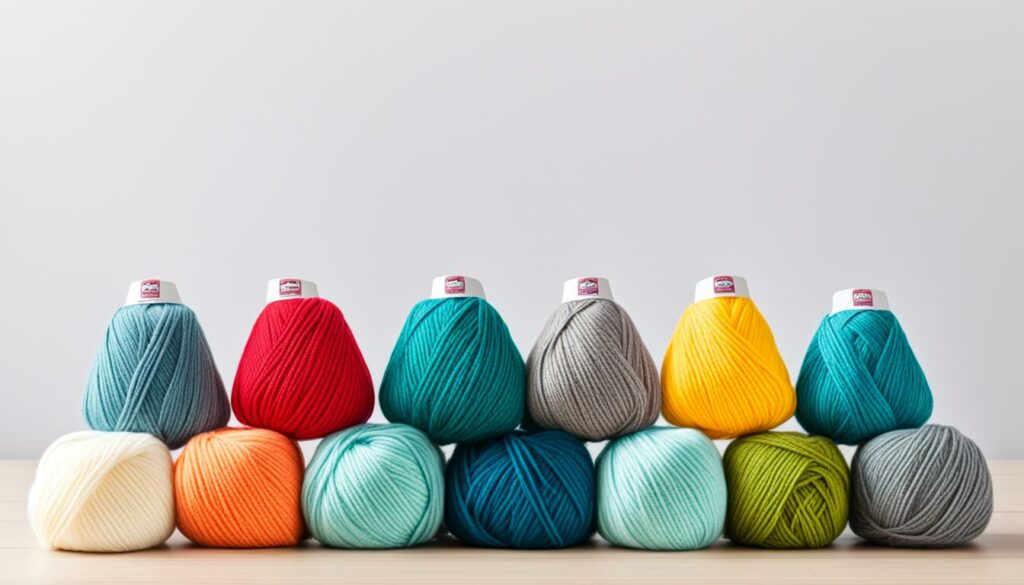
Knitting as Practical Magic
Knitting has always held a certain kind of magic. The process of transforming raw fiber into beautiful thread, and then creating something from scratch, is a true testament to human creativity and ingenuity. It’s no wonder that knitting has often been associated with practical magic and even sorcery.
When it comes to knitting for babies, the magic lies in choosing the right yarn that ensures their safety and comfort. Opting for baby-safe yarn is crucial as it eliminates the risk of harmful chemicals or irritants coming into contact with their delicate skin. By selecting yarns that prioritize baby yarn safety, you are not only ensuring the wellbeing of your little one but also capturing the essence of knitting as a form of practical magic.
So, what does it mean to choose baby-safe yarn? It means looking for yarns that are specifically designed and tested for use on sensitive skin. These yarns are often made from natural fibers like cotton, bamboo, or merino wool. By avoiding synthetic fibers and harsh dyes, you can ensure a gentle and non-irritating experience for your baby.
“The magic of knitting lies in the creation of something beautiful and meaningful. By choosing baby-safe yarn, we not only protect our little ones but also give ourselves the power to weave love and care into every stitch.” – Emily Thompson, Founder of Little Stitches.
When selecting baby-safe yarn, it’s essential to look for certifications and labels that guarantee the quality and safety of the yarn. Some renowned baby-safe yarn brands to consider include Lion Brand, Bernat, and Debbie Bliss. These brands have established themselves as leaders in the industry, prioritizing baby yarn safety and ensuring their products meet rigorous standards.
Remember, knitting is not just about creating beautiful garments or accessories; it’s about crafting something with love and care. By choosing baby-safe yarn, you are adding an extra layer of magic to your knitting projects, ensuring the safety and comfort of your little ones. So pick up your needles, let your creativity flow, and let the magic of knitting bring joy and warmth to your baby’s world.
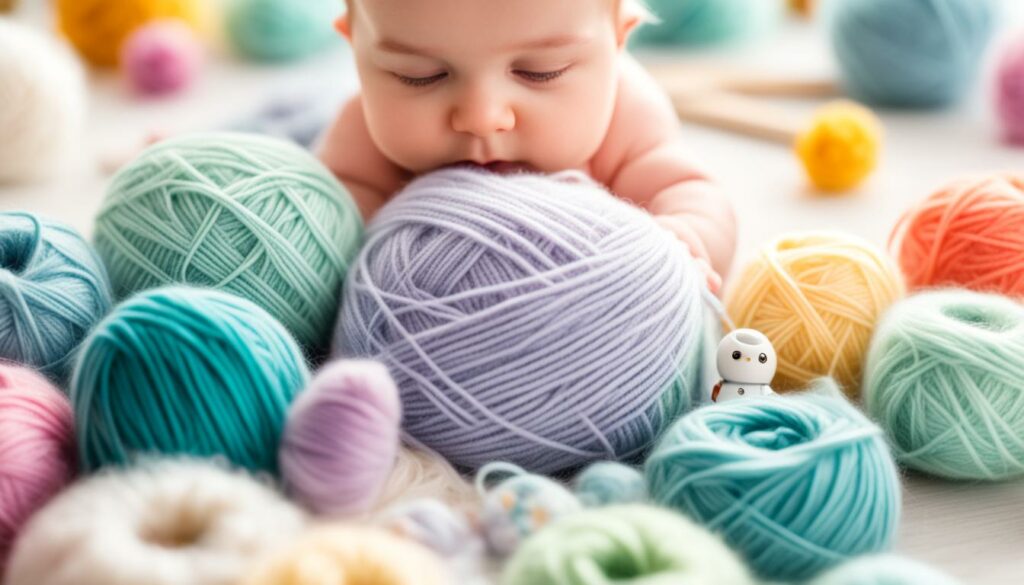
The Historical Impact of Knitting
Knitting has woven itself into the fabric of history, leaving behind a tapestry of significant events and remarkable stories. From acts of resistance during the American Revolution to witnessing public executions in France, knitting has served as a symbol of resilience and defiance.
During the American Revolution, women took a stand against British cloth by boycotting it in favor of homespun yarn. They organized spinning bees, communal gatherings where they spun yarn together, as acts of resistance. This act not only symbolized their commitment to self-sufficiency but also played a role in supporting the fight for independence.
In France, amidst the Reign of Terror, women knitters known as tricoteuses witnessed public executions while they worked on their knitting projects. These women, often associated with political groups, used their craft to transmit information and show solidarity during turbulent times.
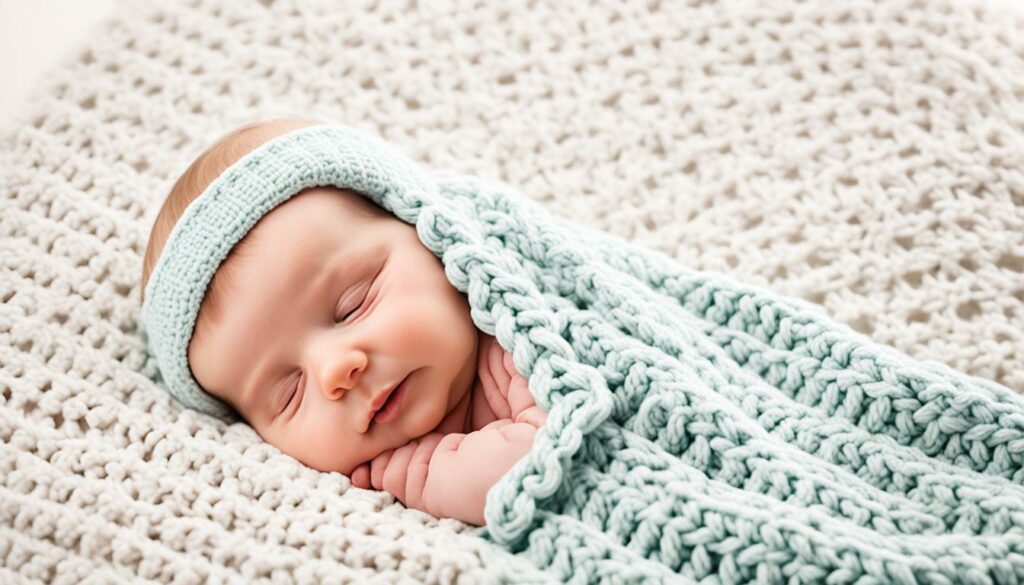
Preserving the Craft of Revolution
This historical interweaving of knitting and revolution serves as a reminder of the enduring impact of this craft. Knitting can be seen as more than just a hobby; it can be a powerful means of expression, resilience, and solidarity.
As we choose baby-safe yarn for our little ones, we recognize that the act of knitting itself carries a history of rebellion and strength. By selecting safe baby yarn brands, we continue the tradition of creating with purpose and intention.
By choosing safe baby yarn brands, we not only prioritize our child’s safety but also support companies that align with our values and ensure ethical production practices. As we delve into the art of knitting, let us not forget the historical significance of this craft and the impact our choices can have. Let us knit our garments and craft our future with skill, love, and a commitment to making responsible choices.
Knitting as a Form of Subversion
Knitting has always been more than just a hobby or craft. It has a rich history of being a form of subversion, allowing individuals to challenge societal norms and expectations. Knitters, like us, have used their needles and yarn to express dissent, challenge injustices, and promote social change.
By choosing baby-safe yarn from ethical and responsible brands, we can extend this subversive nature of knitting to protect our precious little ones. When we opt for yarns produced by safe baby yarn brands, we not only prioritize the well-being of our children but also subvert harmful practices within the industry.
Just as our stitches come together to form intricate patterns, our choices as consumers can weave together a new narrative—a narrative of sustainable, ethical, and safe baby yarn production.
When we select baby-safe yarn brands, we are making a conscious decision to support a more sustainable and safe industry. We are challenging conventional practices and advocating for better standards. Our choices have the power to bring about positive change in the world of knitting and beyond.
By embracing baby-safe yarn brands, which prioritize the use of non-toxic materials and adhere to stringent safety standards, we can ensure that our knitting projects are not only beautiful but also safe for our little ones. The act of knitting becomes a form of subversion in itself—a way to resist harmful practices and create a safer world for our children.
The Power of Choice
Our decision to choose baby-safe yarn goes beyond the stitches on our needles. It is a reflection of our values and our commitment to creating a better future. By supporting safe baby yarn brands, we are sending a message to the industry that we demand transparency, ethical production practices, and products that prioritize the health and well-being of our children.
Together, we have the power to reshape the world of knitting and make it a safer and more sustainable space. Our knitting needles become symbols of change, and every stitch we create becomes an act of resistance.
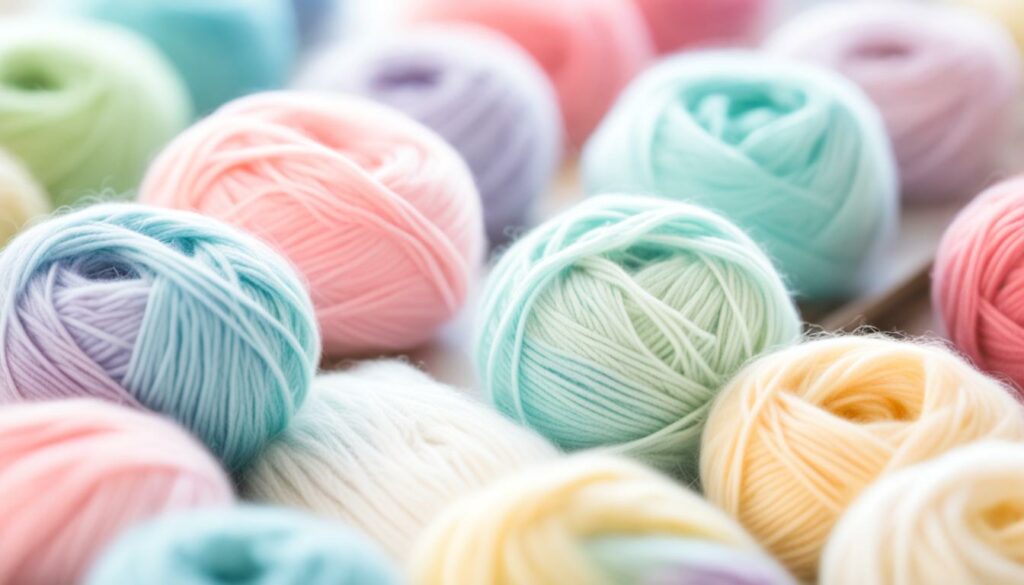
The Path Ahead
As we cast on, knit, and purl, we are not just creating fabric. We are building a movement—a movement that challenges harmful practices, promotes safe baby yarn brands, and advocates for a more ethical and conscious knitting industry.
Together, let’s continue to choose baby-safe yarn and support brands that align with our values. By doing so, we can knit a brighter, safer, and more sustainable future for our children.
The Magic of Creating with Yarn
Creating with yarn is a truly magical experience. It allows us to tap into our creativity and imagination, bringing our ideas to life through knitting. Whether you’re a seasoned knitter or new to this craft, working with yarn offers endless possibilities to create unique and personalized items for yourself and your loved ones.
When it comes to choosing baby yarn, it’s important to prioritize safety, comfort, and quality. After all, we want the best for our little ones. Look for baby-safe yarn options that have been tested and certified to meet the highest safety standards. These yarns are specifically designed to be gentle and hypoallergenic, ensuring that your baby’s delicate skin remains happy and irritation-free.
Softness is a key factor to consider when selecting the best baby yarn. Opt for yarns that are made from natural fibers, such as cotton or bamboo, which are known for their soft and gentle texture. These fibers are not only cozy for your baby to wear, but also breathable, allowing their skin to stay cool and comfortable.
Texture is another important aspect to think about. Babies love to explore different textures, so choosing a yarn with interesting textures can provide sensory stimulation and encourage their development. Look for yarns with subtle bumps, nubs, or variegated patterns that add visual interest to your knitted creations.
Quotes:
“Working with yarn is like painting with colors, only the canvas is made of thread. It’s a beautiful way to express yourself and create something truly special for your baby.” – Knitting enthusiast
Durability is key when it comes to baby yarn. Babies have a knack for getting their hands on everything and anything, so you want to ensure that the items you knit will withstand their curious exploration. Opt for yarns that are sturdy and can withstand frequent washing without losing their shape or softness.
When choosing baby yarn, it’s also worth considering the sustainability aspect. Look for brands that prioritize ethical and environmentally friendly practices, such as using organic or recycled materials. By supporting these brands, you’re making a conscious choice to protect the planet for future generations.
To summarize, when creating with yarn, choose the best baby yarn options that prioritize safety, comfort, and quality. Consider factors such as softness, texture, and durability to ensure the best outcome for your knitting projects. And remember, the magic truly happens when you bring together your creativity and the finest baby-safe yarn.
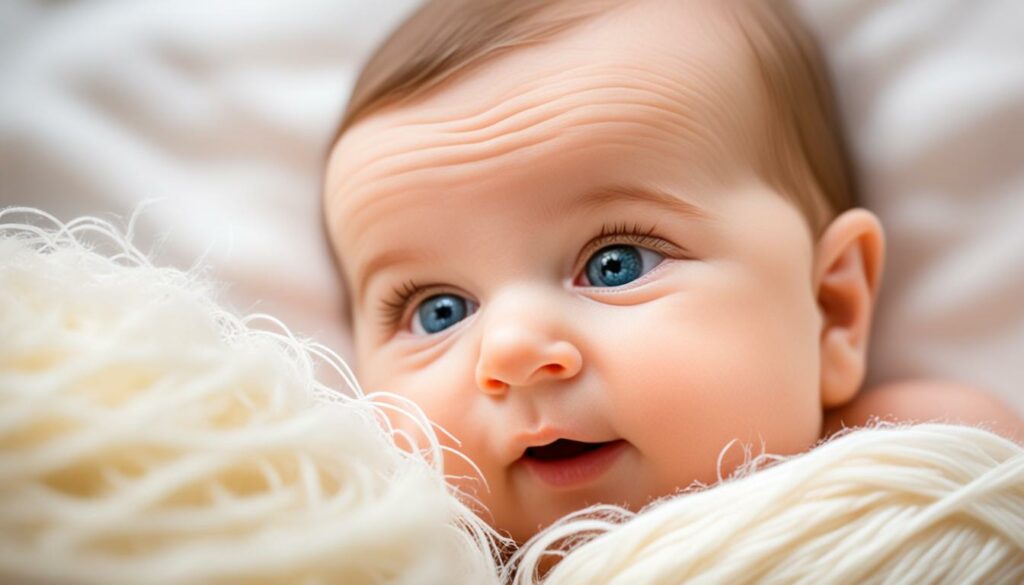
Conclusion
In conclusion, baby yarn is safe for your little ones when you prioritize their well-being. By choosing materials that are suitable for their delicate skin, practicing proper knitting techniques, and opting for reputable brands that prioritize safety and quality, you can create beautiful and safe items for your baby.
Understanding yarn labels, gauges, and fabrics is essential in making informed choices when selecting baby yarn. By paying attention to these factors, you can ensure that the yarn you use is not only safe but also comfortable for your baby’s sensitive skin.
Knitting is a timeless art form that allows you to express your creativity while creating unique and safe items for your baby. By exploring the best baby yarn options available and considering factors such as softness, texture, and durability, you can make choices that result in beautiful and safe knitting projects.
